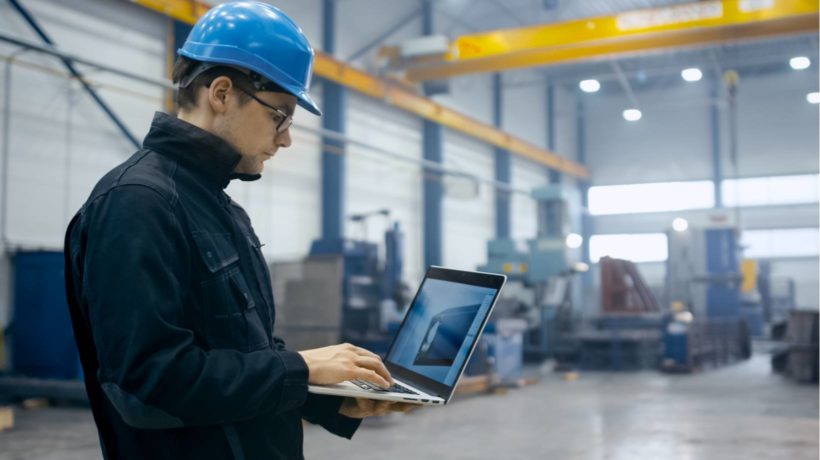New Age Training Strategies For Millennials In Manufacturing
The face of manufacturing is changing. The rise of new technology, increasing global pressure, and the coming of Industry 4.0 and smart manufacturing have been responsible for ushering in this change. In this changing environment, hiring and retaining a qualified workforce that can adapt to this new environment is a challenge that manufacturers have to address. A survey conducted by the National Association of Manufacturers (NAM) shows that 30% of the survey respondents feel that the lack of qualified labor contributes to lost opportunities. 64.5% of those surveyed also believe that creating and expanding internal training programs can help in addressing the labor problem plaguing this industry.
However, what this industry also needs to consider is the rapidly growing number of Millennials. Millennials are people who grew up in the age of evolving technology. In the United States, Millennials constitute a significant part of the population: 8.1 million. Pew Research Centre reports that one in three workers is a Millennial. This new workforce, owing to their comfort with technology, is already changing the manufacturing and supply chain for the better. Luigi De Bernardini, CEO of Autoware, an Austin, Texas-based Schneider Electric partner, says:
"The expectations of the new generation when they enter the work environment will be totally different. They are used to apps, they’re used to different ways of communicating, and this is in some way … something we need to manage.”
While organizations focus on making the industry and the shop floor attractive for the Millennials, adopting technologies such as IoT, AI, Robotics, and concepts like Industry 4.0 and smart manufacturing, they also have to revisit their training strategies to make it relevant for this workforce.
So what new age training strategies do these companies need to adopt? Millennials are driven towards finding alternatives to do a job faster. When it comes to Learning and Development, it is no different. Relying solely on classroom training and static lectures will not lead to the knowledge gain that is expected of them. Learning and Development departments thus have to ensure that their training strategies become more engaging. Here’s a look at a few considerations that go into training this workforce.
1. Contextual Relevance
Relevance drives the millennial generation. They want a rationale behind everything they do. They seek ‘value’ in everything that they engage with. The same feeling extends to training as well. In the manufacturing sector, training has to adapt to this change and evaluate methods to make the training content more engaging. The content has to be synthesized to help them understand the rationale behind the same.
From onboarding to job-specific training, context holds primary importance and has to facilitate knowledge discovery. The training courses, thus, have to be revamped and training providers have to leverage all assets at their disposal such as mobile learning, gamification, Augmented Reality, etc. to ensure maximum knowledge dissemination and absorption.
2. mLearning
The millennial generation is the largest smartphone user. As mobile is an integral part of their lives, training strategies have to leverage mLearning. mLearning also becomes a useful tool since knowledge here is disseminated in small, bite-sized, and easily consumable modules. Mobile also facilitates anywhere-anytime learning, giving these people opportunities to learn on the go, irrespective of their location. For manufacturing companies, this can be a huge boon, especially to train teams who are in geographically disparate locations and for field workers who are constantly on move.
3. Gamification
Gamification in eLearning has proved its effectiveness. It helps in mixing work and play and, hence, appeals to this generation who believes that nothing, even the most boring concepts, should be ‘boring’. In the age of digitization, learning has to adopt a creative approach to ensure greater knowledge absorption. Using elements such as storytelling, including challenges or establishing rules and goals in a game format, make learning far more engaging. And with Millennials, engagement rules the roost. Gamification also gives learners immediate feedback. This helps in taking proactive corrective action during the training process and ensures better training results.
4. The Social Connect
Being the most active users of social media, social networking becomes a tool to develop better training modules for this workforce. As a socially plugged-in generation, these workers are not only comfortable communicating with friends over social media but also are comfortable leveraging it for business. By integrating social media with the learning strategy, manufacturers can facilitate collaboration to drive learning experiences. Social media can be used to collaborate on projects, solve problems, complete assignments, and also get quick and proactive feedback.
5. Video
Video is replacing text everywhere. Training and Learning and Development initiatives are no different. Rich and informative video content that is contextual, to the point, and precise help a great deal in capturing the millennial generation’s attention. With video, content can be easily broken down into small segments. Training teams also get the flexibility to introduce short summaries of the content to establish relevance.
It is also an established fact that highly visual formats lead to better knowledge retention. A video learning strategy fulfills all these criteria and, hence, it becomes a formidable weapon for training departments. As with mobile, video too can help disseminate learning to geographically distant teams and frontline workers, and gives them the option to feel more involved with the training process.
6. Blended Learning
In the manufacturing segment, while online learning can help in increasing awareness and knowledge, classroom training can be used in conjunction with eLearning for more targeted skilling. Such blended learning approach helps training departments to develop a new training strategy that is targeted and scalable so as to address the changing needs and demands of the millennial workforce. A focus on aspects such as personalization, greater customization can be motivating for the Millennials and a blended learning approach enables that.
Training and Development needs to adopt these engaging elements to make learning more effective. At the same time, training departments have to ensure that trainers employed in classroom training are highly skilled, have industry experience, and are committed to understanding the new learning graph of this generation to make sure that classroom training is not a snooze fest.
On a parting note, it helps to state that while these new age training strategies might have been developed with the millennial generation in mind, the ultimate objective is to make learning and training fun and more engaging. This is a kind of makeover that shouldn’t just be restricted to just one generation, should it?









